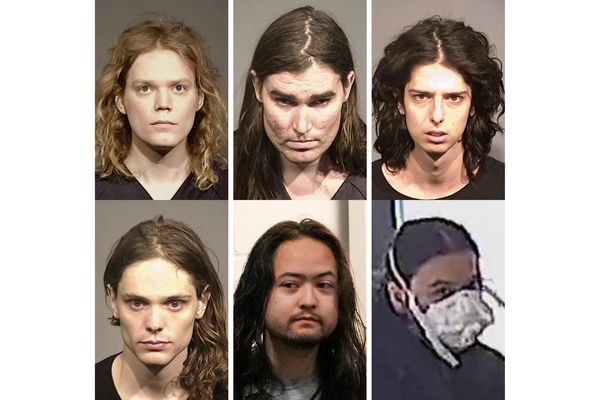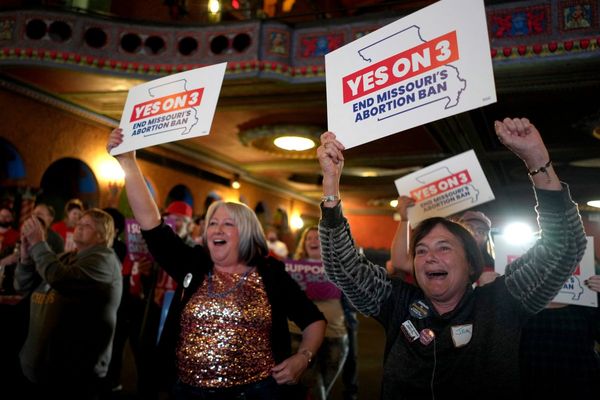
I don’t usually notice the frames on paintings, let alone mention them in a review, but those that enclose the German expressionist Emil Nolde’s seething rectangles of lurid colour are unusually beautiful and striking. Most of the paintings in the National Gallery of Ireland’s courageous and revelatory survey of this great modern artist are enclosed in stark black frames that superbly set off the glow of his yellows, reds and greens. This way of framing his art was favoured by Nolde himself. It heightens his wonderfully eerie effects.
Two young people look at us out of mask-like, lamplit faces from his 1919 painting Brother and Sister. They look decadent, amoral. Does the indefinably sexual aura hint at incest?
When Picasso and Matisse were shattering form and liberating colour in Paris, this artist, born in 1867 on the border between Germany and Denmark, was taking the same kinds of risks, but with a more anxious, introspective, soul-searching edge.
Expressionism was a self-consciously north European art movement, pioneered by Van Gogh and Munch and taken up in the 1900s by young German artists including Nolde, Ernst Ludwig Kirchner and Max Pechstein. In 1906, a year before Picasso painted Les Demoiselles d’Avignon, they formed a group called Die Brücke - “The Bridge”. So much for the textbook version of art history. What this exhibition gets across, in an electrifying and visceral way, is the primal rawness of Nolde’s restless genius.

Candle Dancers, painted in 1912, is the German answer to Matisse’s Dance. It is a lot more chaotic and frenzied, a confession of lust and intoxication. Two women wearing nothing but translucent skirts are throwing their limbs about wildly as they jump between lighted candles. Nolde juxtaposes their purple-pink flesh with a red and gold background like the fires of hell. What’s German for I Can’t Get No Satisfaction? Yet this erotic reverie is fraught, uneasy. Nolde, who grew up in farm country and regularly returned there to paint, finds pre-first world war Berlin a corrupt, scary place. His 1911 painting Party is a gathering of cold-eyed strangers with yellow faces. Sex hums through the bright light but so does menace.
It is Nolde’s social angst and psychic turmoil that holds me gripped. Like Munch’s Scream, his paintings are desperate dives into modern fear. His 1911 work Still Life of Masks I is an uncanny collection of false faces. One mask has a wide open mouth and look of terror – it is the face of Munch’s screaming figure, made into a mask here long before it became a horror film trope and Halloween costume.
Why is this powerful artist not more famous? Why haven’t I seen a big exhibition of his work before?
Looking at the alien, weirdly coloured faces that populate Nolde’s nightmare world, I start to see features that are troubling not aesthetically but historically. Does one of the men in his 1908 painting Market People have a hooked nose straight out of antisemitic caricature? And are the theatre-going couple in 1911’s In the Box being similarly reduced to antisemitic stereotypes? I wonder if I am overreacting, as the gallery labels appear blithely unaware. Then finally in front of Nolde’s 1921 triptych Martrydom there is no room for doubt. As Christ suffers on the cross, two monstrously caricatured Jewish witnesses gloat in the foreground. This is a modernist version of a very ancient hate.
Nolde was in his 60s when Hitler came to power in 1933. He joined the Nazi party and was patronised by Himmler. Like Wagner before him, he was both a vicious antisemite and a revolutionary creative figure. No wonder we’d rather keep him as a footnote to the history of modern art.
In fact, the Nazis themselves provided an alibi of sorts for anyone wanting to admire Nolde’s artistic brilliance, while separating him from the genocide of millions that was the ultimate result of views like his.
In 1937, more than 1,000 of Nolde’s works were denounced as “degenerate art” and removed from German museums. That same year, 33 of his paintings were included in the Degenerate Art exhibition in Munich, along with works by Picasso, Klee and many more. These artists were mocked as decadent imitators of “primitive” art; Nolde truly did admire non-European art. His 1911 painting Exotic Figures is a still life of ethnographic museum pieces. More hauntingly, his 1913 work Head gives an imaginary human figure the face of an Easter Island statue.

Nolde, paradoxically, has a true appetite for otherness. The fear in his art is always laced with desire. Just before the first world war he visited New Guinea, and the portraits and watercolours he made there are full of admiration for what he seems to see as a pure, natural way of life. They may be racist by 21st-century standards, but I would argue that they are not hateful. Under the influence of Gauguin, he seems to be looking at otherness with fairly open eyes.
Yet it would be dishonest and cowardly to try to clean up Nolde and pretend his victimisation as a degenerate artist cancels out his keen support for Hitler. The admiration he expresses for New Guinea’s warriors resembles the enthusiasm that later made Leni Riefenstahl photograph the Nuba people. For the Nazi mind, it was not non-European peoples who were the racial enemy. The fear and loathing in Nolde’s art are directed at demonised Jewish caricatures.
This terrific modern visionary is demonic in every sense. We should never stop looking into his distorting mirror where the extremes of imagination and hate can both be seen and the wound of modern history will never heal.
• Emil Nolde: Colour Is Life is at National Gallery of Ireland, Dublin, from 14 February to 10 June. Then at Scottish National Gallery of Modern Art, Edinburgh, 14 July to 28 October.







